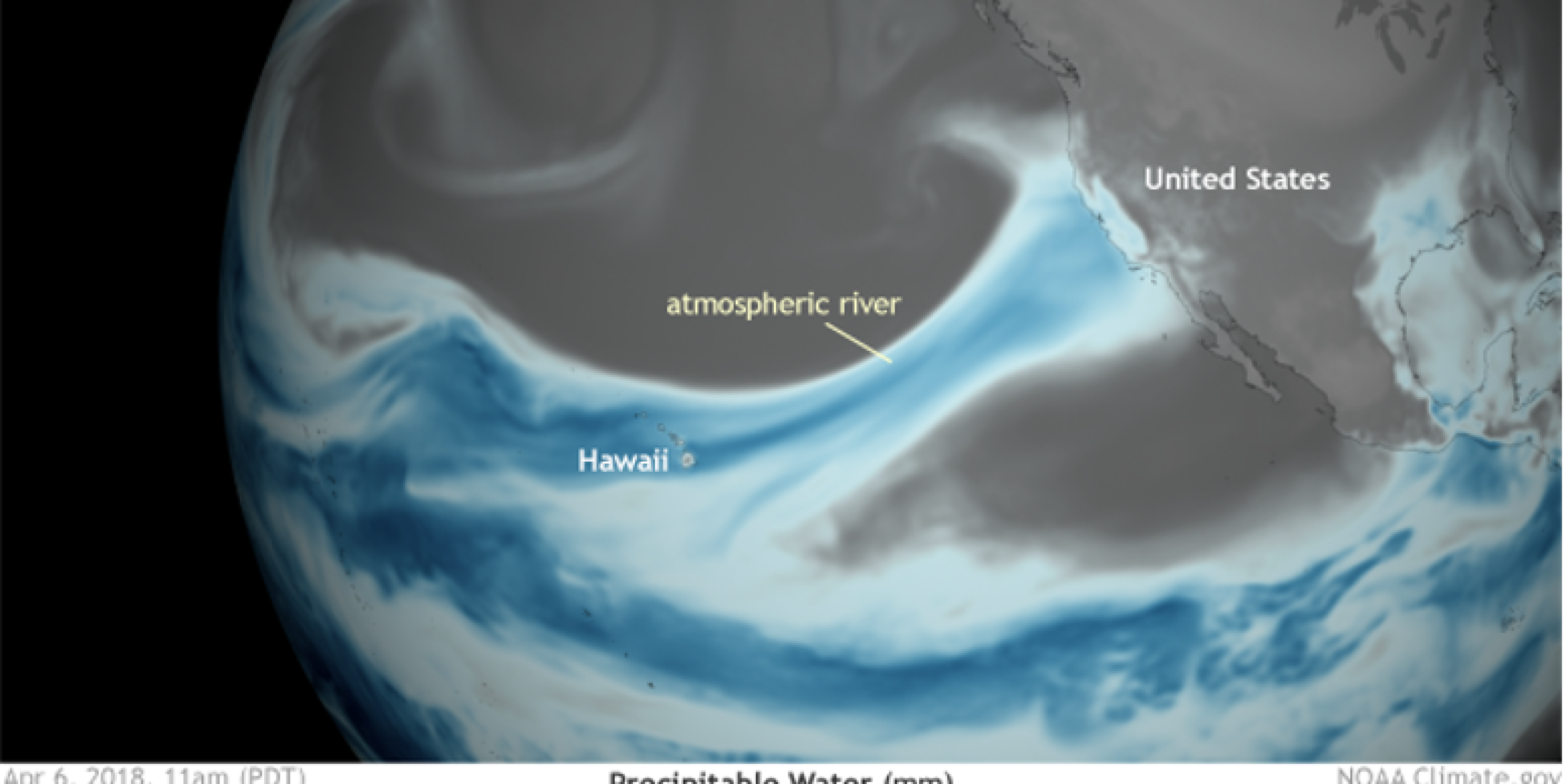Atmospheric rivers, commonly defined as long, narrow corridors in the atmosphere, much like rivers in the sky, transport moisture from the tropics. These “rivers” can produce large amounts of snow accumulation when they make landfall during the cold season. With over half of the streamflow in the Colorado River originating from water released by snow melt, it’s important to understand how atmospheric rivers can affect snowpack in the region.
In a new Geophysical Research Letter article, authors Mu Xiao, and Dennis P. Lettenmaier, identify the atmospheric rivers in the Upper Colorado River basin during a 65-year-long historical record and evaluate their contribution to mountain snowpack. It was found that almost one-third of the snowpack in the basin is attributed to atmospheric river induced snowfall. The primary origin of these atmospheric rivers are from the southwest, however, the pathways do not affect the amount of snow they yield.
“Given that over 70% of the Colorado River’s natural flow originates from snowmelt, it is of great importance to understand the characteristics of snow in the basin. In this study, we determine that on average atmospheric rivers contribute to nearly 30% of the basin’s total snow accumulation, which can yield over 20% of annual streamflow. We also find that atmospheric river related snow is highly important to the region during warm winters,” said author Mu Xiao.
This study was partially funded by the MAPP program.
Read the full paper here.
———————————————————————————————–
About MAPP
The Modeling, Analysis, Predictions, and Projections (MAPP) Program is a competitive research program in NOAA Research’s Climate Program Office. MAPP’s mission is to enhance the Nation’s and NOAA’s capability to understand, predict, and project variability and long-term changes in Earth’s system and mitigate human and economic impacts. To achieve its mission, MAPP supports foundational research, transition of research to applications, and engagement across other parts of NOAA, among partner agencies, and with the external research community. MAPP plays a crucial role in enabling national preparedness for extreme events like drought and longer-term climate changes. For more information, please visit www.cpo.noaa.gov/MAPP.



